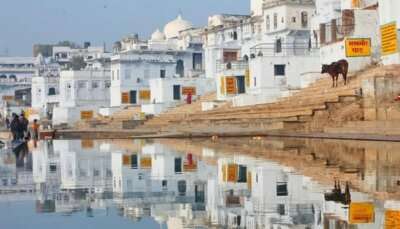A Majestic Dhyana Buddha Statue Amaravathi Of Serenity In Andhra Pradesh

Have you ever been in front of a statue that you could have sworn that time had come to a standstill? Here is the Dhyana Buddha Statue in Amaravathi, one of the largest statues in India which stands tall at 125 feet and exudes an aura of calmness. This statue of Buddha is a clear depiction of the historical and religious importance of Andhra Pradesh. Located on the banks of the Krishna River, this architectural wonder is not only a feast for the eyes but also an insight into the teachings of Buddhism and the diverse history of India. Are you ready to go on a trip?
Dhyana Buddha Statue History
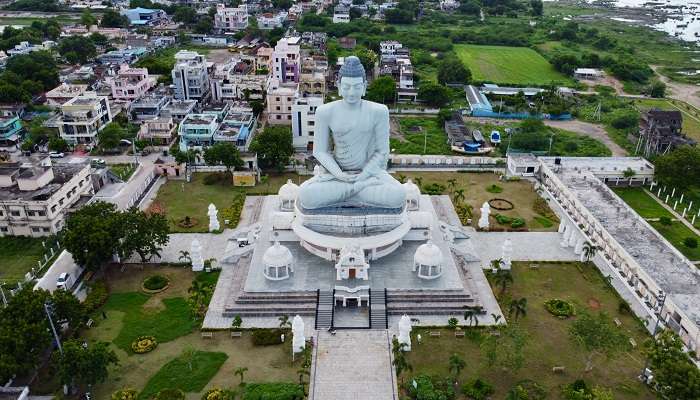
Dhyana Buddha Statue History traces back to the grand vision of showcasing the rich cultural and spiritual heritage of Amaravati and restoring the profound teachings of Buddhism. This statue was launched in 2003 and was completed in 2015 and is a symbol of Buddhist teachings and beliefs. The project was launched by the Andhra Pradesh government and several Buddhist associations with the idea of developing a religious pilgrimage and tourist destination.
Amaravathi has always been a very important Buddhist site with history going back to the Mauryan Empire. The Dhyana Buddha Statue, which is 125 feet high, represents meditation (dhyana) and non-stirring. Not just the towering structures but the designs and the histories that these have. The statue is a symbol of the past and the rich history of the region and its importance to Buddhism and the art that was produced during that time.
Must Read: Shopping In Vijayawada
Architecture Of The Dhyana Buddha Statue
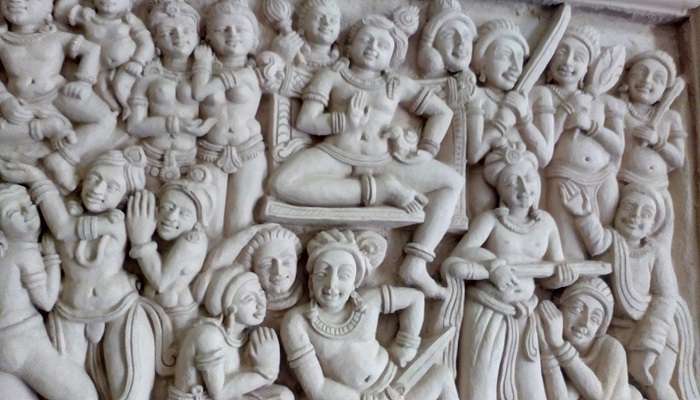
The architecture of the Amaravathi Buddha Statue is designed based on traditional Buddhist art and the contemporary style. The calm expression of the Buddha figure, the intricate carving of the lotus on which it sits, and the positioning of its hands all make for a stunning work of art. The statue is a synthesis of the classic Buddhist imagery and the modern artist’s skill.
Built with reinforced concrete and covered with sandstone panels, the statue is made to endure for many years. This makes it possible for the statue to remain a landmark for generations to come since the used material is durable.
Dhyana Buddha Statue Timings
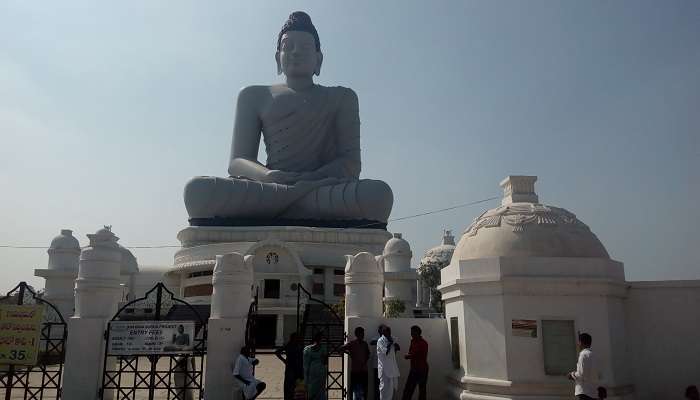
Dhyana Buddha Statue timings are from 9 AM to 7 PM, allowing visitors ample opportunity to explore this magnificent monument and its serene surroundings. The best time to visit is early morning or late afternoon when it is not too hot, and the place is quite calm.
Suggested Read: Waterfalls In Tirupati
Dhyana Buddha Statue Amaravathi: Nearby Attractions
Nearby, you can explore various attractions, including the ancient Bhattiprolu Stupa, an important Buddhist site, and the Archaeological Museum, which houses a rich collection of relics and artefacts. These attractions make Amaravathi a captivating destination for those interested in history, spirituality, and natural beauty. Here are a few places recommended for your trip:
1. Amaravathi Mahachaitya
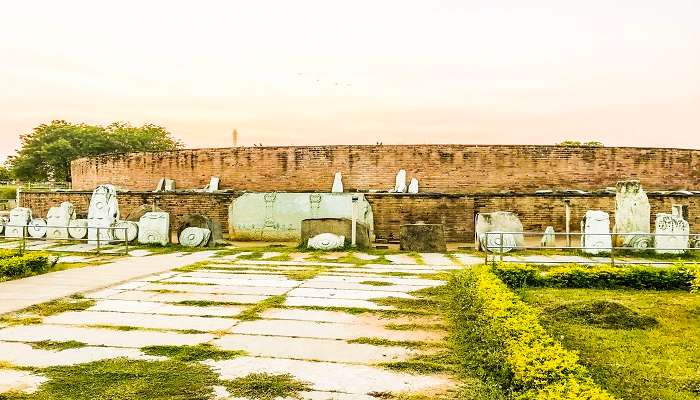
Amaravathi Mahachaitya, an ancient stupa, which is said to have been built during the 2nd century BCE, is located just a short distance away from the Dhyana Buddha Statue. This architectural masterpiece was once a holy place for Buddhists where it was filled with beautiful sculptures of Jataka stories. The large dome of the stupa is one of the few remaining symbols of the historical past of the region. It used to be covered with marble slabs which have since worn off. The structure’s remains and the inscriptions and artefacts found during the archaeological excavations provide a glimpse of the Buddhist practices that prevailed in India. While strolling around the Maha Chaitya, one can imagine that they hear the echoes of the past and sense the presence of spiritual energy, which makes it interesting for history lovers.
2. Amaravati Archaeological Museum
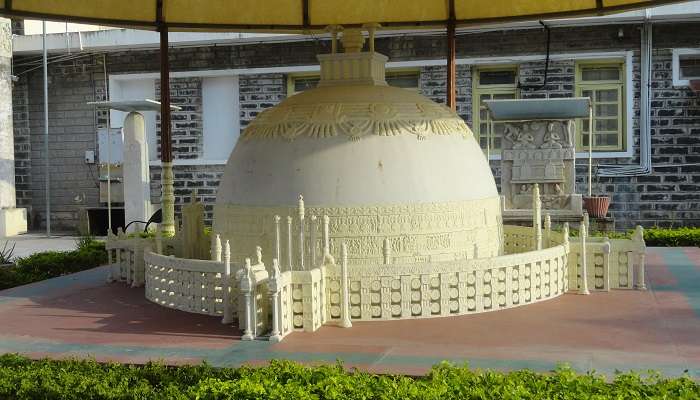
The Amaravati Archaeological Museum is particularly interesting for those who like history. It contains sculptures, inscriptions, and coins collected from different parts of the region. The museum also has a rich collection of art and architectural marvels that date back to several centuries of Buddhism in Amaravathi. Some of the attractions include the well-carved limestone panels, the Buddha statues, and the manuscripts. Every artefact sheds light on the existence and the history of the early settlers of this region. After visiting the statue, the museum is a good next stop as it provides a lot of background information on the Buddhist history of Amaravathi.
Suggested Read: Festivals In Andhra Pradesh
3. Undavalli Caves
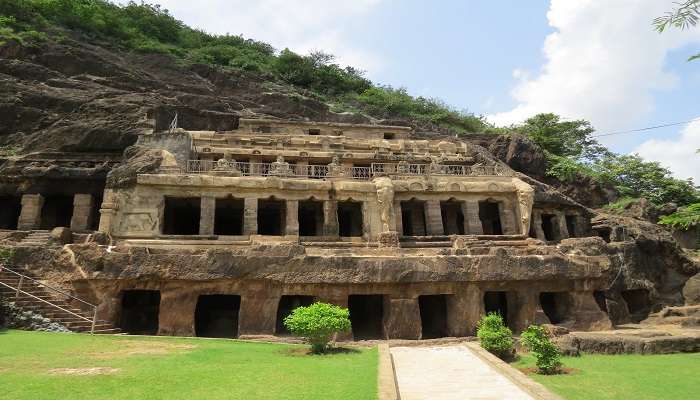
Undavalli Caves is another interesting site located about 30 km from Amaravathi; it is a fine example of rock-cut architecture. These are the caves from the 4th-5th century AD with elaborate sculptures and a huge reclining figure of Lord Vishnu. The caves are many storeyed and the biggest of all the caves contain the grand statue which is more than 20 feet long. The caves that surround the area contain temples and statues of Hindu gods and goddesses, which shows the syncretism of Buddhism and Hinduism. The Undavalli Caves are a perfect example of the architectural genius of ancient Indians and the religious tolerance that existed back then; thus, it is a site of interest for everyone with a passion for history and archaeology.
4. Mangalagiri Temple
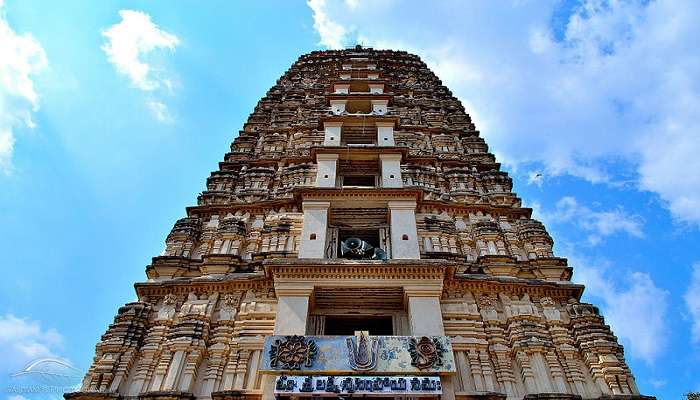
Located at a distance of 20 km from Amaravathi, Mangalagiri Temple is a famous temple of Lord Narasimha. The temple is located on a hill which provides a beautiful view of the surrounding environment. The speciality of this temple is the holy water called ‘Panakam’ which is made up of jaggery and water and it is believed to have some sort of divine powers. It was constructed during the Satavahana dynasty and has a Dravidian architectural style with huge gopurams and beautifully carved pillars. Devotees from different parts of the country come to seek blessings and feel the sacred atmosphere. The steps leading to the temple are a challenge, but taking them is a good exercise besides being spiritually fulfilling.
Suggested Read: Zoos In Andhra Pradesh
5. Bhattiprolu Stupa

The Bhattiprolu Stupa, another Buddhist site, is situated at a distance of about 50 km from Amaravathi. Archaeological explorations have yielded artefacts and inscriptions in the Brahmi script, considered among the earliest scripts of the Indian subcontinent. It is assumed that the stupa was built in the 3rd century BCE, which makes it one of the oldest Buddhist structures in the area. It comprises a large dome and several relic chambers that previously stored religious relics. The Bhattiprolu Stupa can be seen as a symbol of the diffusion of Buddhism in the area and the interactions between the civilizations. Tourists can walk around the ruins and get to know more about the stupa and its use in the past.
Buddha Statue Location & How To Reach
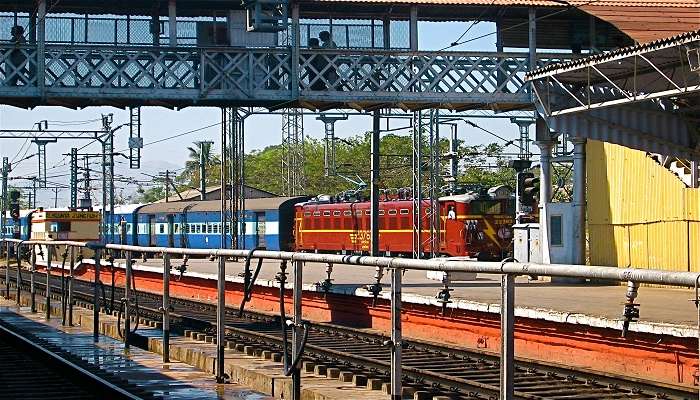
The Dhyana Buddha Statue is situated in Amaravathi, a village in the district of Guntur in the Indian state of Andhra Pradesh. This place is located near the Krishna River, which also contributes to the serene atmosphere of the place.
Accessibility by Road: Amaravathi has good road connectivity. The distance between Guntur and Khammam is 35 km and it takes 35 minutes to reach Khammam by car through NH16. Public transport is provided through state-owned buses, while private taxis are also easily accessible.
Accessibility by Rail: The nearest railway station is Guntur which is located about 32 km from Amaravathi. From there, one may hire a taxi or even board a bus to get to the statue.
Accessibility by Air: The nearest airport is Vijayawada Airport, which is approximately 52 kilometres away from the city. Many taxi and bus services are available for tourists from the airport to Amaravathi.
Further Read: Things To Do In Andhra Pradesh
Dhyana Buddha Statue Amaravathi is one of the few brilliant pieces of huge cultural significance in Andhra Pradesh. In the relatively new state capital of Amaravathi, the statue shows respect for the state’s cultural and religious diversity. It has become a common tourist attraction for people who want to be mesmerised by how gigantic this statue is. So plan a trip to Andhra Pradesh and don’t forget to add the Dhyana Buddha Statue to your itinerary.
For our editorial codes of conduct and copyright disclaimer, please click here.
Cover Image Credit: Krishna Chaitanya Velaga for Wikimedia Commons
Frequently Asked Questions About Dhyana Buddha Statue
When is the best time to visit the Dhyana Buddha Statue?
Early morning or late afternoon, if one wants to have a comfortable time. Try to plan the trip between November to February as the weather is pleasant and you can enjoy it easily.
What is the fee to visit the Dhyana Buddha Statue?
The monument charges Rs. 10 for adults and Rs. 5 for kids for visiting the Dhyana Buddha Statue. The prices can be changed and fluctuate depending on the time and demand.
Can I get to the top of the Dhyana Buddha Statue?
No, visitors can't climb the Amaravathi Buddha Statue. This is because the height of the statue is too high and it is not allowed to climb on that.
Are there any eateries around the statue?
Yes, there are a few decent eating places near the statue premises. You can try the famous local food or any food other food of your choice.
Is the Dhyana Buddha Statue accessible to wheelchair users?
Yes, the site has ramps to facilitate easy movement of people with disabilities. The charges for the wheelchair will be extra depending on the hour of usage.
People Also Read:
Statue Of Unity Statue Of David Statue of Liberty

Unveil the hidden treasures of the globe and turn every travel dream into reality. As a Content Writer, I am passionate enough to craft stories from ancient wonders to modern marvels. My words paint the picture-perfect itinerary for unforgettable experiences. Let my words be your trusted guide to immerse in the diverse culture and discover the beauty of the unknown.




